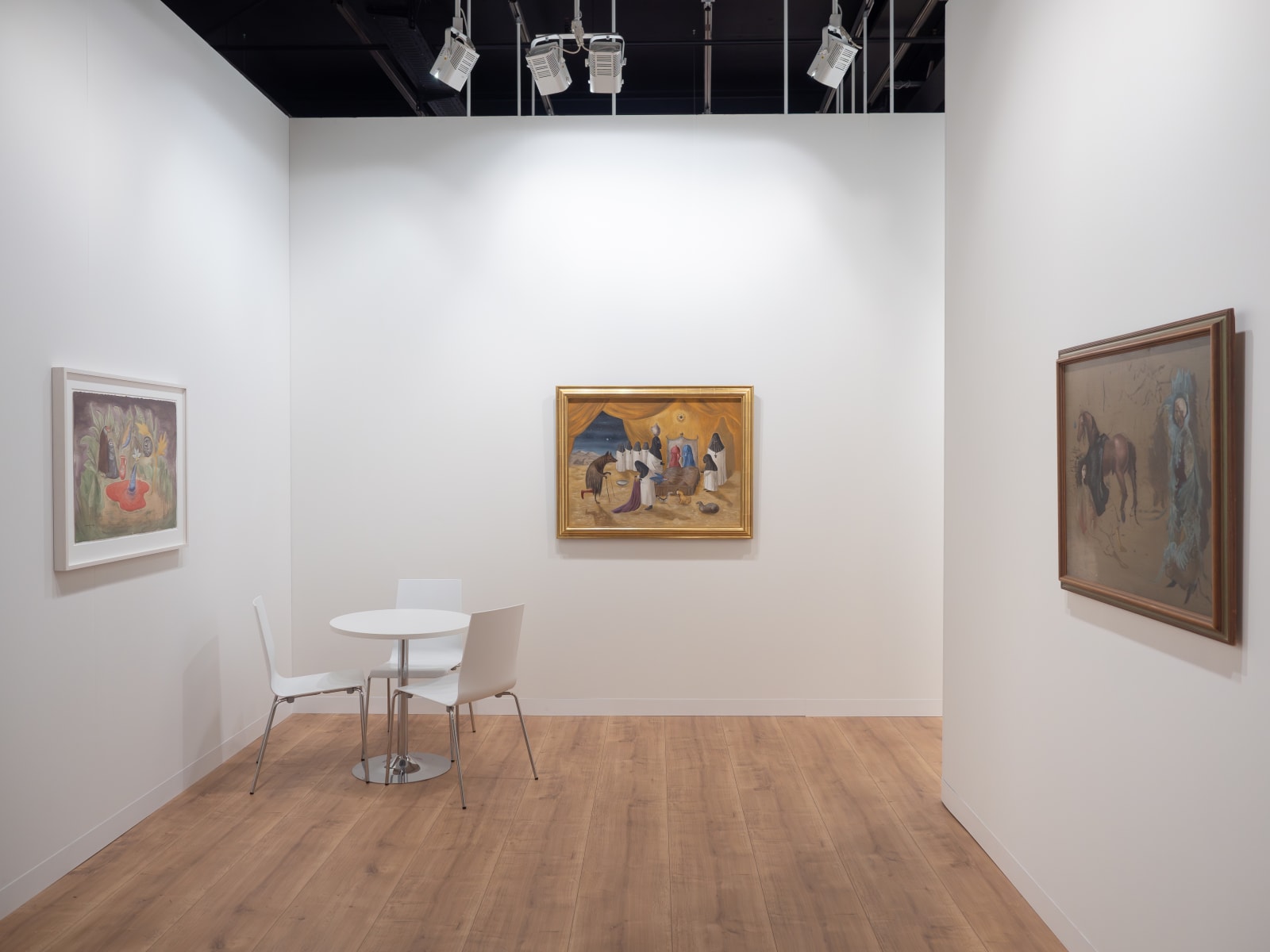Art Basel 2024 | Booth D10: Leonora Carrington
"Once a dog barked at a mask I made; that was the most honourable comment I ever received."
(Leonora Carrington in 'Commentary,' "Leonora Carrington: A Retrospective Exhibition," New York: The Center for Inter-American Relations, 1975, p. 23)
Gallery Wendi Norris is pleased to present Leonora Carrington's Bestiary, a wide range of artistic mediums from the celebrated artist's oeuvre in the gallery's first-ever presentation at Art Basel from June 13 - 16, 2024. Appearing in the art fair's Feature section, Leonora Carrington's Bestiary showcases one of the greatest sources of inspiration for the artist, the animal kingdom. The presentation is a testament to the gallery's deep relationship with Carrington, highlighting the diversity of her artistic output and the role of animals within her practice. Gallery Wendi Norris collaborated with Carrington on her last solo exhibition during her lifetime and has been championing her work and legacy since her death in 2011.
A fascination stemming from her childhood, animals were deeply influential in the development of Carrington's imagination as a young artist and continued to serve as primary subjects over fifty years. The presentation explores how the artist created a world brimming with animalia and deployed animals as agents of humor, figures of critique, and sources of camaraderie in a veritable bestiary of both zoological forms and mythical creatures.
In Carrington's ecology, animals are accorded equal status with their human counterparts. They appear as hybrid figures, totemic forms, surrogate selves, cosmic familiars, or protagonists. Recently featured in the 59th Venice Biennale, The Milk of Dreams (2022), Portrait of Madame Dupin (1949) portrays Carrington's subject as a statuesque figure with a black butterfly instead of a neck and head. Playing with the tradition of portraiture and the idea of hybridity, Carrington creates a symbolic portrait of her subject, using the butterfly to allude to aspects of her character rather than paint a conventional likeness. This commingling of creatures upends the dichotomy between man and beast and blurs the distinction between human subject and animal object. Double Portrait (c. 1937-40) is unique in Carrington's oeuvre in that it is the only known double portrait of herself and her fellow artist and then lover, Max Ernst. Distinctive and pivotal, it features several of the quintessential themes and motifs (her horse alter-ego, play with gender and sexuality, and the androgyne, to name a few) that Carrington would introduce in her earliest work and go on to develop throughout the eight decades of her artistic career. Carriage (1946) takes the shape of a combined wagon and bird, with miniaturist painting depicting the coexistence of traditional animals and those that have been anthropomorphized.
Through her leveling of the species, Carrington calls into question the symbolic weight historically invested in animals. From Greek mythology to Aesop's Fables, the animal kingdom has been retrofitted to serve as ciphers for human morality, assuming human traits, flaws, and failings. Turning this tradition on its head, Carrington investigates the animal nature of humans: how we are, in fact, closer to our bestial brethren than we would care to admit.
The fair will take place June 13 - 16, 2024.







